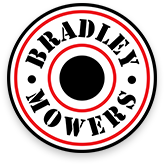As you give your lawn a much needed trim, your lawn mower starts acting strangely. The next thing you know, the lawn mower isn’t as effective as it used to be. If this happens, you might need to get it repaired.
There are several signs your lawn mower may need repair. These signs include squeaking noises, smoke and vibrations.
1. You Start Hearing Odd Noises
Machines weren’t built to last forever, and lawn mowers are no exception. One of the most notable signs that you need to repair your lawn mower is when it starts making odd sounds. Lawn mowers are supposed to only make a humming sound while it’s being used. It might make a few other noises like a rattling or knocking sound. However, it should not happen every time you use it.
Lawn mowers that are past their life expectancy are more likely to make these sounds, so naturally, you’d just replace them. However, if your lawn mower is relatively new and it is making these sounds, you’ll need to get it repaired.
2. Oil Starts to Leak Out
When a lawn mower starts leaking out oil while you’re using it, you need to get it repaired immediately. There are a few causes of an oil leakage including a ruptured reservoir, a clog or a broken ring seal.
Do not continue using the lawn mower if it’s leaking oil. It is a major health risk and can cause serious injury. But fortunately, fixing an oil leak is simple. In most cases, you just need to replace an internal component.
3. The Vibration Is Getting Out of Hand
If there is one thing to associate a lawn mower with, it’s definitely the vibration. Now, having a lawn mower vibrate is normal because it has an engine inside of it. What’s not normal is when it vibrates too much. When the engine starts to vibrate too much and starts to make whirring sounds, that’s how you know there’s an issue. A lawn mower that is vibrating excessively is a sign that one of its components is bent, damaged or broken entirely.
Having a faulty lawn mower is one of the biggest headaches a homeowner can face. But luckily, it’s one of the easiest fixes. As long as you tackle the problem early, you’ll have very little to worry about. However, if the problem is too severe, repairing it might be out of the question.
